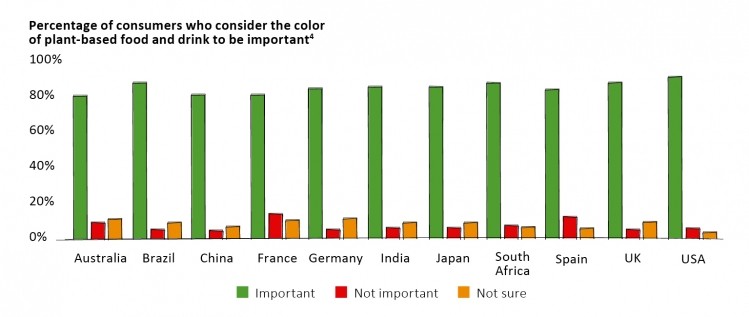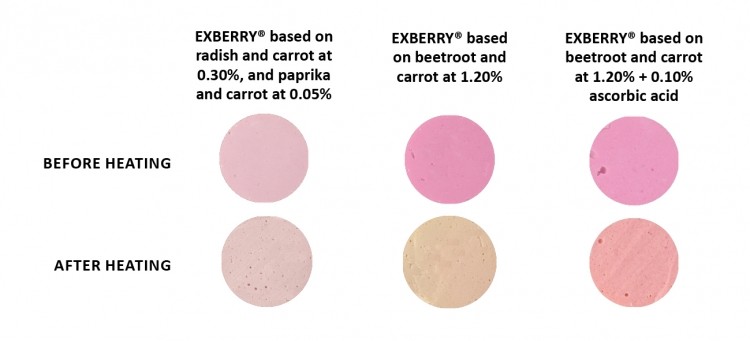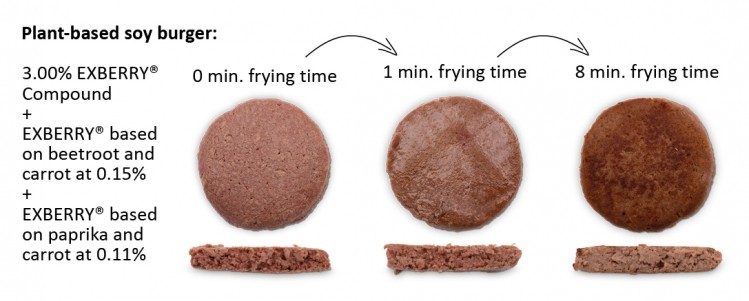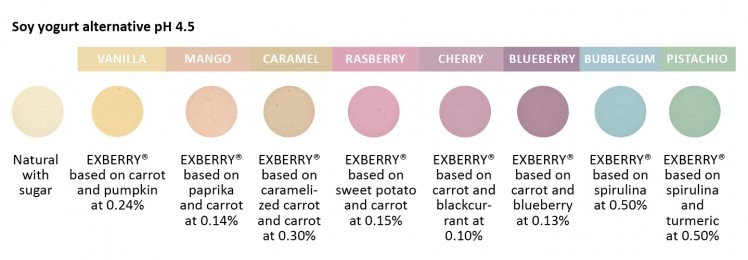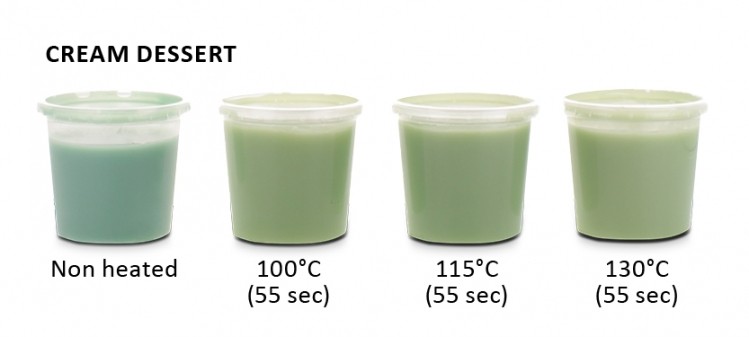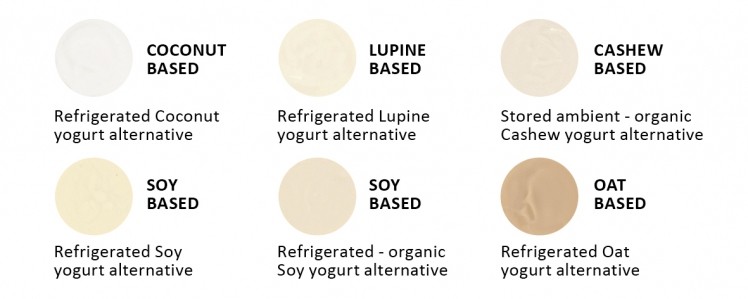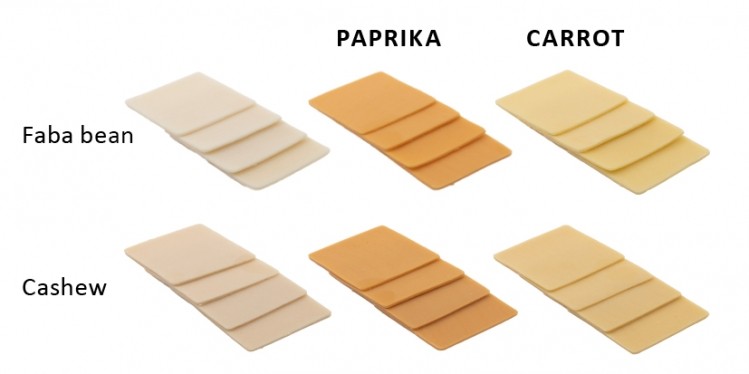Promotional Features
Enticing colours for plant-based foods
Shoppers want plant-based products to look just like the real thing. Plant-based colours allow brands to mimic the appearance of animal products while maintaining clean labels.
The plant-based market has never been more competitive, with the quality and quantity of products increasing all the time. To secure widespread consumer acceptance, plant-based food and drink must deliver all the right sensory qualities.
The focus is often on taste and texture – but colour’s importance should never be underestimated. A 2020 review of studies into plant-based meat, for example, found that appearance is vital to product acceptance and concluded that meat alternatives must aim to mimic the way real meat changes colour during the cooking process1.
Recent FMCG Gurus research also shows that 75% of consumers worldwide say it is important that meat substitutes’ appearance is the same as real meat2.
The choice of colouring ingredient can be every bit as crucial. Health is a major driver for many plant-based purchases, and eight in 10 consumers globally say it is important for plant-based food and drink to be made with well-known ingredients3.
Brands therefore need to take steps to clean up their ingredient lists if they are to maximise their products’ appeal. Manufacturers have often used spices to provide both flavour and colour to meat analogs while maintaining clean ingredient lists. However, spices offer only a limited range of colour shades and are not suitable for applications where the addition of flavour is undesirable.
Plant-based colours can provide a highly effective alternative, delivering shades from across the rainbow with minimal impact on flavour.
Plant-based colours
Plant-based colour concentrates – widely known as Colouring Foods – are created from edible fruits, vegetables, and plants such as carrots, beetroot, and paprika, using physical processing methods. Due to the way they are made, they are considered to be ingredients rather than additives in the EU and many other parts of the world, enabling manufacturers to develop products with clean and clear labels.
They can be used to effectively mimic the appearance of meat and seafood, as well as delivering appealing shades to a wide variety of plant-based dairy products. They can even replicate the colour-shifting characteristics of red meat during cooking.
However, plant-based colours are not always a plug-and-play solution. They have varying colour hues, temperature and pH sensitivities, and other characteristics, which means there are many technical considerations to bear in mind to ensure optimal results.
Colouring plant-based meat
Plant-based colours created from raw materials such as safflower, turmeric, carrot, paprika, beetroot, and radish can impart a ‘meaty’ colour to a wide variety of applications. They can be used to create highly realistic alternatives to products including burgers, steaks, ham, pastrami, pepperoni and even pâté de foie gras.
Several factors need to be considered to achieve the most attractive and stable colours. These include the base colour, pH, fat, and heat. Sliced meat alternatives, for example, are created from a variety of protein sources that can significantly affect the base colour. This can influence the choice of plant-based colour concentrate, as well as the required dosage. Many pink, red and purple concentrates contain anthocyanin pigments, which are influenced by the pH value of the application. To achieve the desired shade, it is necessary to understand the pH of the base during processing, cooking, and in the final product. Vegetable concentrates containing anthocyanins, such as radish and black carrot, offer improved stability over the shelf life compared to those in fruit concentrates.
Beetroot concentrates can provide a pH-independent source of pinks, but their betanin pigments are sensitive to heat. For maximum colour retention, it is best to add ascorbic acid or reduce the cooking time or temperature.
When creating clean-label alternatives to burgers, sausages, meatballs and minced meat, manufacturers are faced with a choice between the red coloration of raw meat or the appearance of cooked meat. As a result, products can lack authenticity, while consumers also miss out on the experience of choosing whether to cook their plant-based meat so that it appears rare, medium or well done.
It is possible to achieve such a colour shift using plant-based concentrates. One option is to use a blend of colours made from raw materials that have different hues and heat sensitivities, such as beetroot, carrot and peppers. With the right selection and ratio of colours for the formulation, the effect of the heat can allow for a shift from red to brown.
GNT has also developed a unique, plant-based solution made from carrots and vegetable oil to simplify and enhance this process in red meat alternatives. EXBERRY® Compound Autumn Red and EXBERRY® Compound Fall Forest Red are flowable red powders of encapsulated carrot concentrate. When heated, the encapsulation melts and releases the carrot concentrate, which results in a colour change similar to that of real red meat.
Colouring plant-based dairy
Plant-based colours can be used to deliver a wide range of shades in plant-based dairy products including yogurts, ice creams and milk drinks. The chart below shows some of the possibilities in soy-based yogurt products.
Spirulina is used to achieve natural blue and green shades. As spirulina is a protein-based solution, it can be heavily impacted by acid and temperature. It is important to ensure that any acid used in the formulation is blended in well before adding the spirulina product. If the heat treatment is too high or lasts too long, it can decrease the colour intensity. You can prevent this effect by increasing the colour dosage in order to obtain the desired colour after heat treatment.
Plant-based dairy is created from a variety of materials that can significantly affect the base colour. In the case of yogurts, options include coconut, soy, oat, cashew, and lupin. This will influence the choice of colour concentrate and required dosage.
Cheese alternatives, meanwhile, are becoming increasingly popular as brands find new ways to mimic the taste, texture, and melting properties of dairy cheese. Key considerations for these products include the base colour and fat content.
Colour concentrates that contain carotenoid pigments can shift from orange to a yellow hue in the presence of fat. Carotenoid-containing raw materials include orange carrots, pumpkins and paprika. When using these colours, it is recommended to include an antioxidant to support performance.
By using a combination of colour concentrates, such as orange carrot and pepper, it is possible to achieve a range of cheese shades from yellow cheddar to orange ‘Red Leicester’ style. It is always worth noting the base colour as well as the fat content of the final plant-based application and adjusting the dosage as necessary.
Colouring plant-based seafood
Plant-based seafood has vast growth potential, with brands now developing alternatives to fish, shellfish and crustaceans. Plant-based colours can be used to deliver a broad spectrum of clean-label shades to replicate the appearance of real seafood in almost any type of plant-based alternative.
They can be used to effectively mimic the appearance of tuna steak’s red myoglobin protein or the pink-brown shade of canned tuna. They can replicate the orange vibrancy of smoked salmon or the orange-pink coloration and white stripes of salmon steaks. New processing technologies allow plant-based colours to be added to the exterior, too. This innovation can be used to mimic the coral stripes on cooked shrimp or when non-homogenous colour is desired.
The base colour, pH and fat content can all be important considerations in plant-based seafood. In the case of a salmon steak, the difference between crystalline or solubilised fats can make a substantial difference to the final appearance when using carotenoid-based colour concentrates, as shown below. This may affect the choice and dosage of plant-based colour.
Futureproof colouring solutions
Today’s shoppers want plant-based products to contain plant-based ingredients they know and trust. Plant-based colour concentrates allow manufacturers to use well-known crops such as carrots, radishes, and turmeric to create products with strong visual appeal.
Plant-based colours can present a wide variety of challenges, but technical advances are opening up more possibilities than ever before. Working with a knowledgeable supplier is key to ensuring a smooth transition and effective results.
With the right approach, plant-based colours will help plant-based brands maximise consumer acceptance by delivering uber-realistic products with clean and clear labels.
For more information on this article, please contact EXBERRY® by GNT or visit www.exberry.com
Source
1 He, J. et al. ‘A review of research on plant‐based meat alternatives: Driving forces, history, manufacturing, and consumer attitudes’ Comprehensive Reviews in Food Science and Food Safety (2020)
2 FMCG Gurus ‘Meat & Plant-Based – Global Report’ (2022)
3 FMCG Gurus ‘Meat & Plant-Based – Global Report’ (2022)


